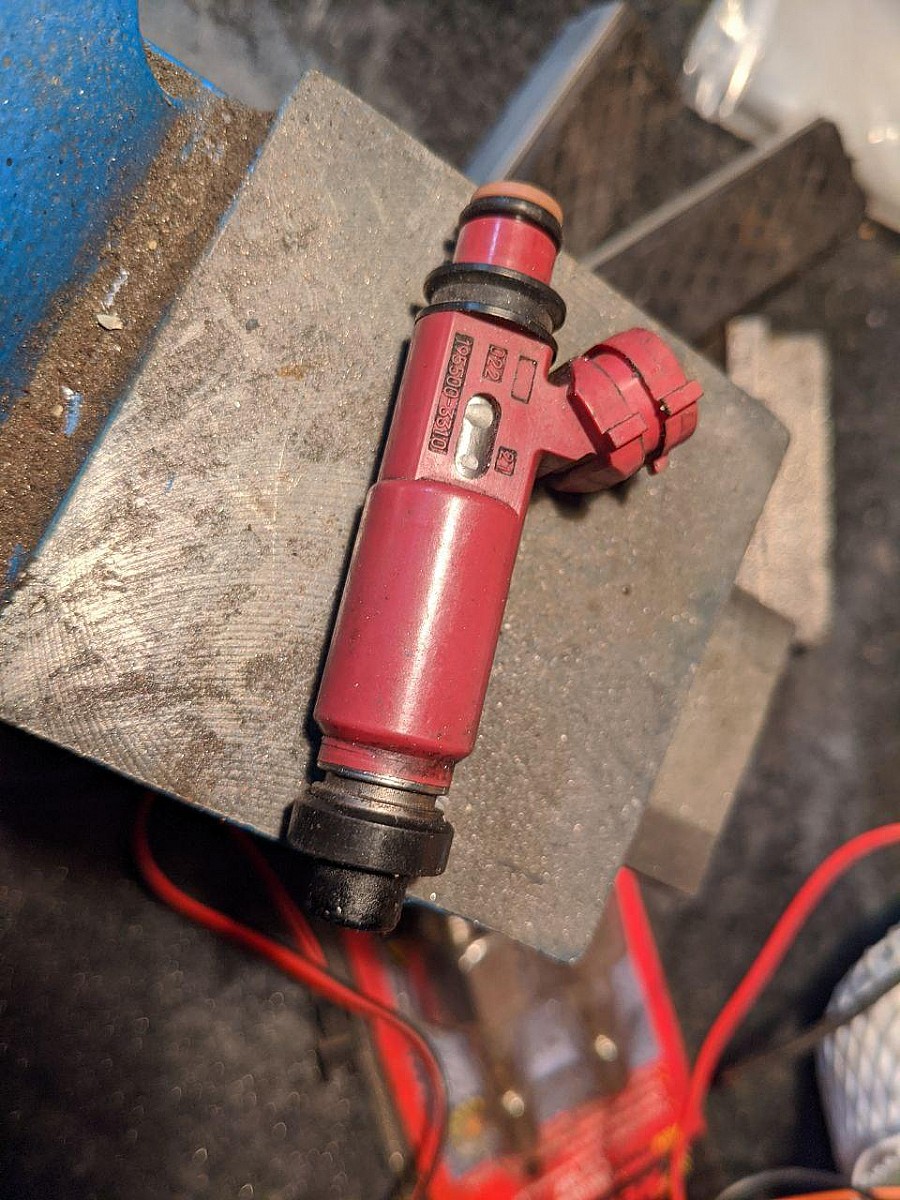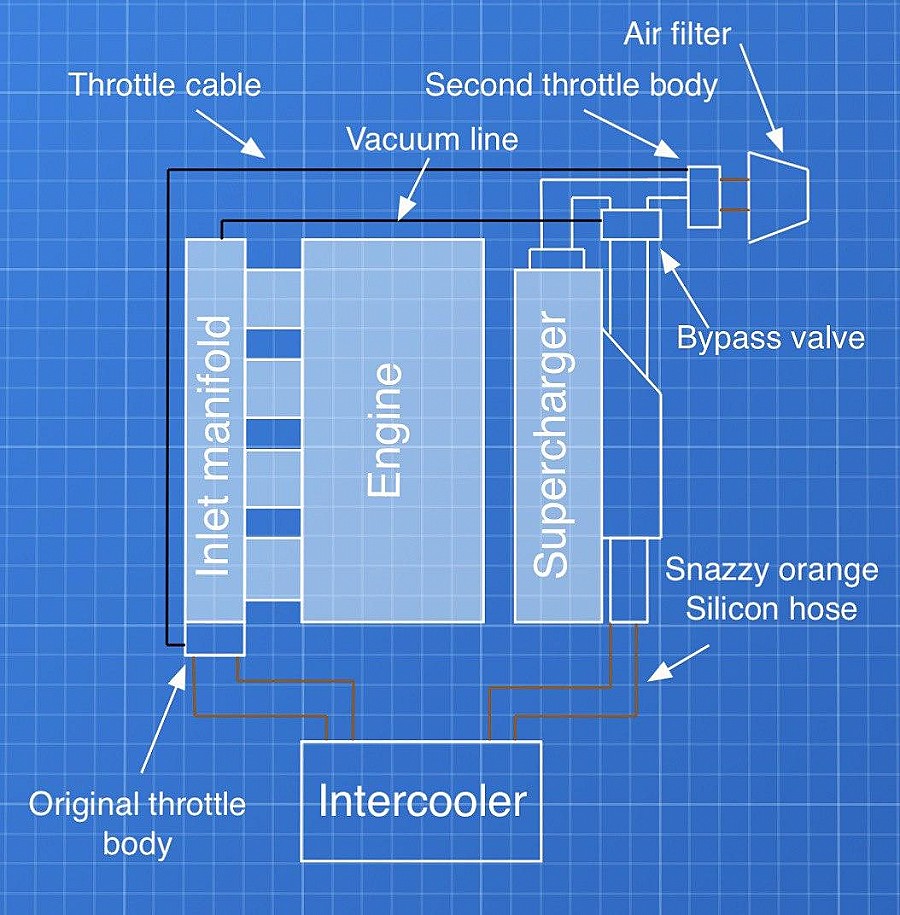The supercharger is on and Ermy starts. claps hands Right, so kettle on, we’re done right?
I wish. The MX5 is amazingly forgiving and will start pretty much whatever happens to it. Whether it can move, get its idle down to a sensible level, pass emissions tests or whether the engine will melt itself 50 miles in is a different story.
To try and avoid that, we need a tune. But before you do that, you need to make sure your hardware is up to scratch. Theres no point trying to tune the engine when the system is running badly, or when it has inconsistent air flow etc. So, last things to consider before you try and tune y our newly supercharged engine:
Injectors:
When pushing more air into the engine you need more fuel. We are trying to target an optimal AFR (Air Fuel Ratio), too much fuel (Rich) is just as bad as too little (Lean) and will either kill our emissions and fuel economy, starve us of power or just melt the engine. The supercharger greatly increases the air flow, so the fuel rate level needs to increase.
The fuel rate is based on the size of the injectors and the fuel pressure. You can push more liquid through the stock injectors if the fuel pressure is higher, which you achieve by adding a bigger fuel pump. The MX5 has a recirculating fuel system, meaning that if you put more fuel in than the injectors can deliver, it will just return it to the tank.
The stock MX5 has a good fuel pump in already, capable of delivering 255 litres per hour of fuel at 3 PSI. The stock tank is only 50l, so at full clip we would run out of fuel in 11 minutes and 42 seconds. So you can increase the injector size (To a point i’m sure) without making the pump bigger. We decided instead to just work on the injectors for now.

The Injectors we removed had a part code of 195500-3310 with a flow rate of 265cc.

We increased these to Denso 195500-4450 taken from a Mazda RX8 with a flow rate of 425cc.
The ECU needs to control how much fuel is put into the engine, which it does by timing the length of the squirt of the injectors. It has no way of knowing how big the injectors are, so if you just put bigger injectors in and don’t tell the ECU, it will squirt for the same length of time and add too much fuel. In our case this would add roughly 50% too much fuel.
More importantly though, make sure you know precisely what part you have and its flow rate before you put your engine back together, as you wont have any good way to find out the flow rate later on. In theory these are colour coded in some way, but the aftermarket injectors for an RX8 seem to basically all be yellow, whereas some of the original Denso 195500-4430 on ebay claim to be for an RX8 and are Red… make sure to check the part numbers.
Two throttle bodies:
Superchargers are attached to the engine’s belt system. Even when the engine is idle, the supercharger is receiving drive and compressing any air which enters into the system.
Unless we intervene, the pipe work, intercooler and everything else fills with compressed air, in our case at about 7-9psi (We know this because we cocked up the original instal). This meant the Supercharger would be constantly straining to compress the air further making it noisy, and fills the pipe work with pressurised air. The pipes may either pop off, or create so much pressure that the ECU panics when the throttle body opens.
We could install a complex electrical clutch like in the Mercedes 230 slk which stops the supercharger from being engaged until it reaches a set RPM or perhaps a certain air fuel ratio. We don’t really have the scope or need to do that, but we do need to stop the supercharger from just building up a big chunk of pressure until the pipes pop.
One way to do this is to stop the air getting in. With no air in, the charger cannot compress it and the system will not build up pressure in the intercooler, instead it will just re-circulate the air in the system. To stop air getting in, we installed a second throttle body attached by a cable to the original.

When the accelerator is pressed, the stock throttle body opens, the cable pulls on the additional cable and pulls the second throttle body open and allows air into the inlet circuit.
In theory we could also have just relocated the original throttle body, but this involved moving wiring of the Throttle Position Sensor (TPS) and coolant pipes, instead we installed a “dumb” second throttle body which just replicated the first.
Bypass Value:
The last element of the setup is to have a bypass valve which allows air to bypass the supercharger when it just needs low pressure air (Such as when its idle) and to recirculate air when itsn ot applying charge. This saves the supercharger from straining too much as it is now just recirculating the same air in a loop.

We’ve repurposed the bypass valve from the same Mini Cooper R53 that supplied the super charger. This has a small vacuum actuated valve which controls a butterfly valve. When one side of the valve has a vacuum, the valve opens allowing air to pass through.

We have changed the pipework arrangement massively when compared to the original mini. On Ermy not enough vacuum is created near our supercharger, presumably because the pipe work, intercooler and charger are full of air and vacuum is only generated in the Inlet. So we can repurpose some of the vacuum points on the inlet and connect this to the butterfly valve. We just block up the other end of the hose to avoid air getting into the system.
The Final setup:

This is the diagram of our final setup, which we have managed to get working, running, not screaming like a banshee and able to accelerate without cutting out.
I realised after all of the above, that there were loads of forum posts about how to supercharge your car, but very few single one shot, start to finish posts. So I will endeavour to pull all of this into once place shortly!